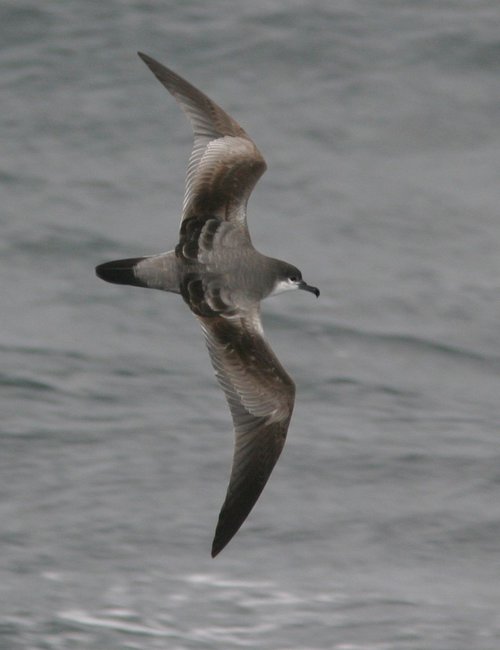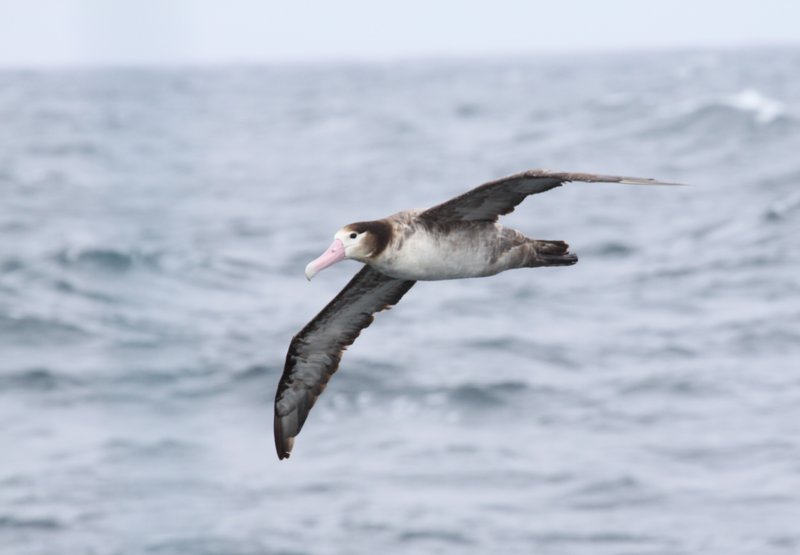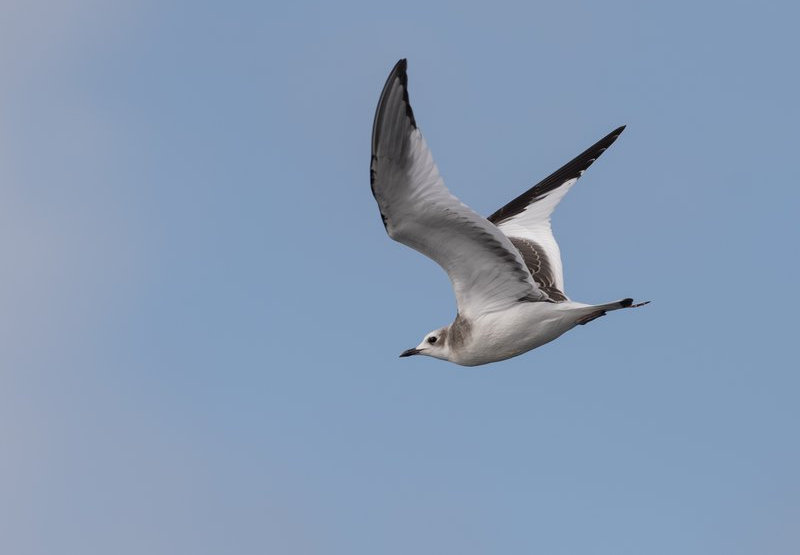
By Kathy Kuletz, Seabird Coordinator / Wildlife Biologist - Migratory Bird Management, U.S. Fish and Wildlife Service
In the northern Gulf of Alaska, as with all sub-arctic and Arctic regions, seabird communities and abundance change dramatically with the seasons. During spring, many birds migrate through and species richness is highest, with up to 56 species recorded during offshore surveys. However, the abundance of marine birds is highest in fall, due largely to an influx of shearwaters, which feed from summer through fall in Alaska’s waters before heading back south to nesting areas off New Zealand.

Black-footed albatross, which breed in the western Hawaiian Islands, travel widely across the northern Gulf of Alaska, and are most commonly observed along the shelf slope and break. Image courtesy of Luke DeCicco, USFWS. Download larger version (jpg, 2.0 MB).
In addition to seasonal changes, there is a strong cross-shelf gradient from the inner continental shelf to the shelf break and deep basin. Seabird abundance peaks during summer and fall, when breeding birds are near their colonies and raising chicks. Among these are fish-eating, deep-diving alcids such as common murres, horned and tufted puffins, and marbled murrelets, along with surface-feeding black-legged kittiwakes and glaucous-winged gulls. Some of these species move to the middle shelf after breeding or when foraging conditions are better offshore, where they overlap with more pelagic, omnivorous species like northern fulmar and sooty shearwaters. Over the outer shelf and shelf break, surface-foraging birds predominate, such as albatrosses and storm-petrels.
Once one leaves the upwelling zone of the shelf slope, seabirds are few and far between and predominated by truly oceanic, wide-ranging species. However, in this ‘desert’ of deep-ocean basin, there are relative hot spots – which often appear near seamounts. A variety of species pass through the Gulf of Alaska, but the seamounts in particular attract birds from throughout the North and South Pacific, as well as Arctic coastal areas of the Chukchi and Beaufort seas. Most of these pelagic species are hunting for squid, small fish, and krill (small crustaceans). Seabirds take advantage of the concentration of prey brought to the surface by the upwelling of plankton and nutrients near seamounts.

Buller's shearwaters are highly pelagic during the non-breeding season and are at the northern edge of their range during our summer, before heading back to New Zealand for the nesting season. Image courtesy of Brad Benter, USFWS. Download larger version (jpg, 366 KB).
The seabirds that occupy the deep waters between the outer shelf and seamounts include black-footed and Laysan albatrosses, which breed primarily in the northwestern Hawaiian Islands. Though rare, the endangered short-tailed albatross may be found here, far from their nesting place on a volcanic island near Japan. Buller’s shearwater, one of the largest shearwaters, comes from nesting sites in New Zealand. From the Arctic tundra come post-breeding and immature Sabine’s gulls. In fall, even south polar skua are regularly, if infrequently, observed in these waters. Far from land these underwater mountains, invisible to us from the surface, provide an oasis where the pathways of a variety of far-ranging seabirds intersect.

Short-tailed albatross, an endangered species, can occur near the seamounts and in low numbers throughout the northern Gulf of Alaska, but breed primarily on a volcanic island near Japan. Image courtesy of Sophie Webb, USFWS. Download larger version (jpg, 1.1 MB).

Sabine's gull, like this immature bird and adults during the non-breeding season, are highly pelagic in both the Pacific and Atlantic, but they breed in the Arctic tundra. Image courtesy of Luke DeCicco, USFWS. Download larger version (jpg, 1.7 MB).